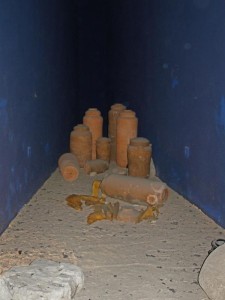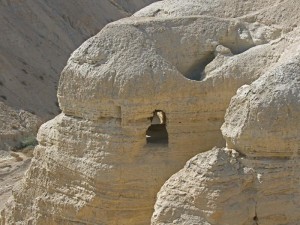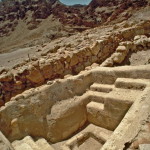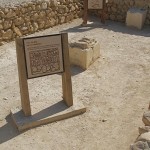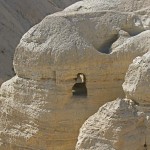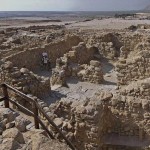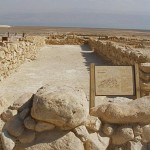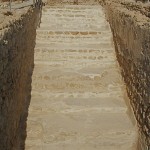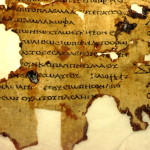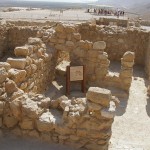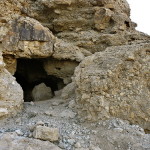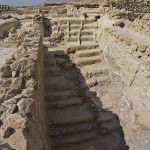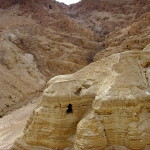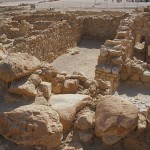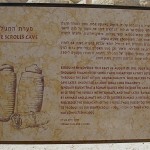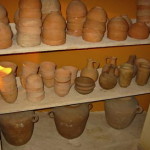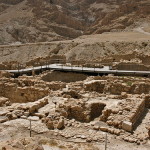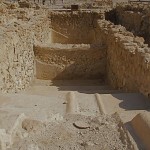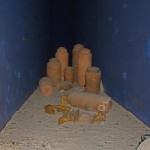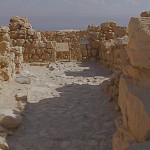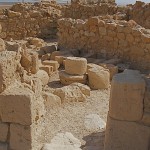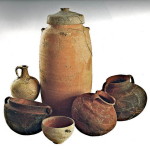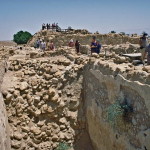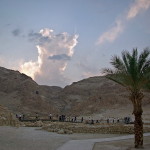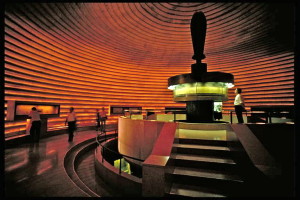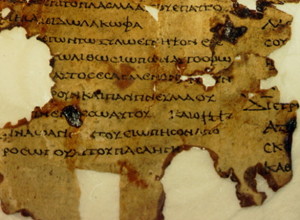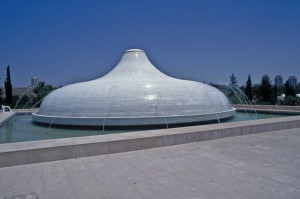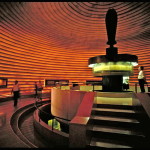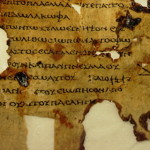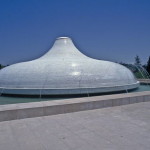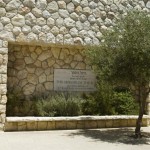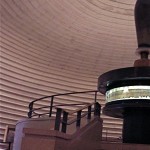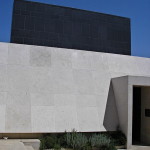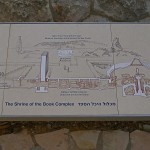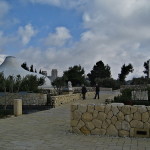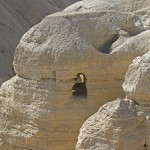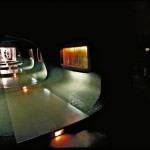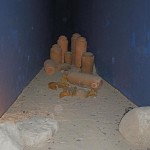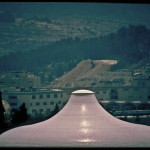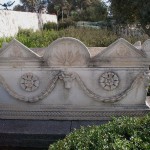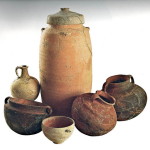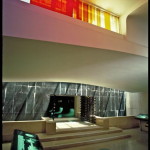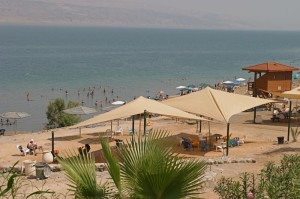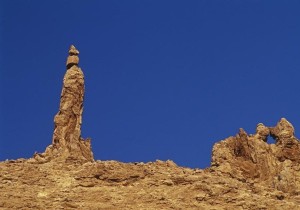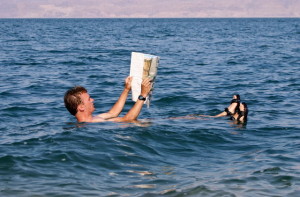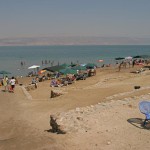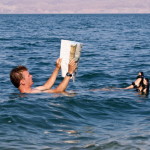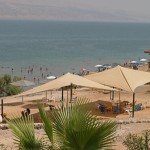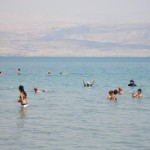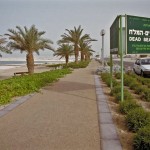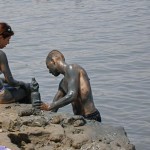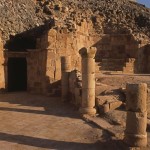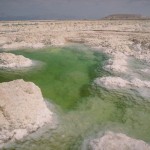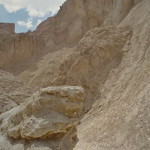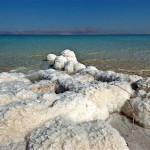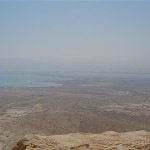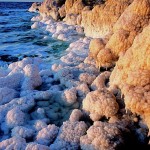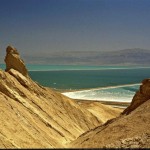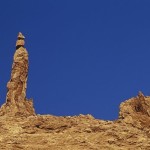Israel
Qumran is famous as the hiding place of the Dead Sea Scrolls, a literary treasure trove hidden since shortly after the time of Christ.
The site is north-west of the Dead Sea, about 15km south of Jericho and about 1.5km west of the road that runs along the western shore of the Dead Sea.
A Bedouin goat- or sheep-herder by the name of Mohammed Ahmed el-Hamed found the first scrolls in 1947, when he threw a rock into a cave in an attempt to drive out a missing animal. The sound of breaking pottery drew him into the cave, where he found seven clay jars containing scrolls that had been wrapped in linen for nearly 2000 years.
Eventually, fragments of about 850 scrolls were found in 11 of the hard-to-reach caves that pockmark the cliffs of the Qumran area. A 12th cave, its contents looted, was found in 2017.
The ancient manuscripts were in various states of completeness. Only a handful were intact, the largest more than 8 metres long. Most were written in Hebrew, some in Aramaic and a few in Greek. Most were on parchment, with a few on papyrus. They had been preserved by the hot, dry desert climate.
The scrolls include at least fragments of every book of the Old Testament except the book of Esther. The oldest existing copies of the Old Testament, they generally confirm the accuracy of later manuscripts. Other scrolls also give a new insight into the Jewish society in which Christianity began.
Essenes were ‘unique and admirable’
Who hid the scrolls at Qumran? Academics have hotly debated this question. The prevalent view is that the scrolls were written or copied by a devout group of Essenes, a strict Jewish sect formed in reaction to what they saw as religious laxity in Judaism.
The Essenes at Qumran lived an austere lifestyle in their remote desert surroundings. Study of the Jewish Law went on in shifts around the clock.
The community gained the admiration of the Roman statesman Pliny the Elder, who wrote: “They are unique and admirable beyond all other peoples in that they have no women, no sexual desire, no money, and only palm trees for company. Owing to the influx of newcomers, they are daily reborn in equal numbers.”
The Essenes believed the end of the world was imminent. They never married because they wanted to be ritually pure when the Messiah appeared.
No scrolls mention Christ
The Qumran community was driven from its wilderness retreat by the Romans in AD 68, leaving its library of scrolls hidden in caves for safe-keeping.
Although the Essenes existed during the time of Christ, none of the scrolls refer to him or to any other New Testament personality.
Ruins of the sect’s communal site remain, including a watchtower, a dining hall, cisterns and cemeteries.
Visitors can watch a short film on the Essenes and view a small exhibition before going to the archaeological site. From there, the caves above can be seen.
Where are the scrolls now? Most are in Jerusalem (eight at the Shrine of the Book, where pages are regularly on display, and the others at the Rockefeller Museum). Some are in Jordan and Europe.
Related site:
Administered by: Israel Nature and Parks Authority
Tel.: 0972-2-994-2235
Open: 8am-5pm (4pm Oct-Mar)
- Ritual bath (© Israel Ministry of Tourism)
- Pottery storeroom (Seetheholyland.net)
- Close-up of cave 4 at Qumran (Seetheholyland.net)
- Looking from the guard tower to the scriptorium (© Custodia Terrae Sanctae)
- Communal dining room (Seetheholyland.net)
- Steps to pool or water storage (Seetheholyland.net)
- Fragment of scroll found at Qumran
- Remains of living quarters (Seetheholyland.net)
- Entrance to cave 11 where Temple Scrolls were found (Ian W. Scott)
- Steps showing signs of earthquake damage (© Custodia Terrae Sanctae)
- Cave number 4 at Qumran (Effi Schweizer)
- Remains at Qumran (Seetheholyland.net)
- Description of scrolls cave (Seetheholyland.net)
- First-century pottery from Qumran (David Q. Hall)
- Excavations at Qumran (James Emery)
- Ritual bath (Seetheholyland.net)
- Qumran display of clay vessels in which scrolls were found (Seetheholyland.net)
- Inside the scribes’ room (Seetheholyland.net)
- Column drums at Qumran (Seetheholyland.net)
- Qumran pottery (Mariana Salzberg, © Israel Antiquities Authority)
- Community buildings with cistern in foreground (© Israel Ministry of Tourism)
- Qumran landscape (Berthold Werner)
References
Bowker, John: The Complete Bible Handbook (Dorling Kindersley, 1998)
Charlesworth, James H.: The Millennium Guide for Pilgrims to the Holy Land (BIBAL Press, 2000)
Inman, Nick, and McDonald, Ferdie (eds): Jerusalem & the Holy Land (Eyewitness Travel Guide, Dorling Kindersley, 2007)
Murphy-O’Connor, Jerome: The Holy Land: An Oxford Archaeological Guide from Earliest Times to 1700 (Oxford University Press, 2005)
Sussman, Ayala, and Peled, Ruth: The Dead Sea Scrolls (Israel Antiquities Authority and Israel Museum Products, 1994)
External links

